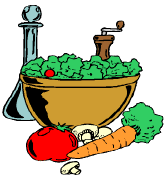What is Fiber?
Fiber is an important part of our diet. It furnishes no nutrients, vitamins, or minerals. It isn’t even absorbed into our bodies.
So why do we need fiber? Fiber adds bulk that keeps other foods moving along our digestive tracts, and it holds water which, in turn, softens the stool for easy elimination.
What exactly is fiber? Fiber is the part of a plant that cannot be digested. It comes in two different forms:
* Soluble Fiber forms a viscous gel and disperses well in liquid. Examples include oats, beans, and many types of fruit.
* Insoluble Fiber does not disperse in water and passes through the digestive system largely intact. Some good sources of insoluble fiber include wheat bran, whole-grain breads, and many types of vegetables.
Both types of fiber are essential for proper bowel function. They help to create larger, softer stools which move through the digestive tract more easily. The secret to getting enough soluble and insoluble fiber is to eat a well-balanced diet that includes a variety of high-fiber foods.
Long Term Benefits of Fiber |
 |
Many researchers believe that a lack of fiber in the diet is implicated in digestive tract-related diseases. Constipation can result from lack of fiber and fluid in the diet. And straining a pressure resulting from constipation may lead to diverticular disease and hemorrhoids. Fiber helps maintain normal bowel function to prevent constipation and its potential complications.
Most high-fiber foods are comparable low in calories and fat. They also create a feeling of satiety since they typically take longer to chew.
* The digestive process begins in your mouth. Your teeth and saliva break up the food into small pieces, allowing it to go through the esophagus into the stomach.
* The stomach breaks down the food into smaller pieces, preparing it to travel on to the lower part of the digestive tract.
* After leaving the stomach, the food passes into the small intestine. Here the nutrients from the food are further broken down and absorbed into the bloodstream. By the time food passes through all 21 feet of the small intestine and reaches the large intestine, or colon, mainly water and waste products remain.
* Now the colon begins the process of moving the waste to the rectum. During this time, it absorbs excess water from the waste. Under normal conditions, it is amazingly efficient: For every 10 quarts entering the colon, approximately 9.9 quarts are reabsorbed before reaching the rectum.
* Sometimes the colon’s natural contractions or rhythms are disturbed and the waste materials move too slowly. Stress, medications, pregnancy, illness, resisting the urge to defecate, lack of exercise, or inadequate fiber or liquid intake are all potential disruptions to the colon’s function. If transit is slowed, waste hardens and is not passed in a timely fashion to the rectum, resulting in constipation.





